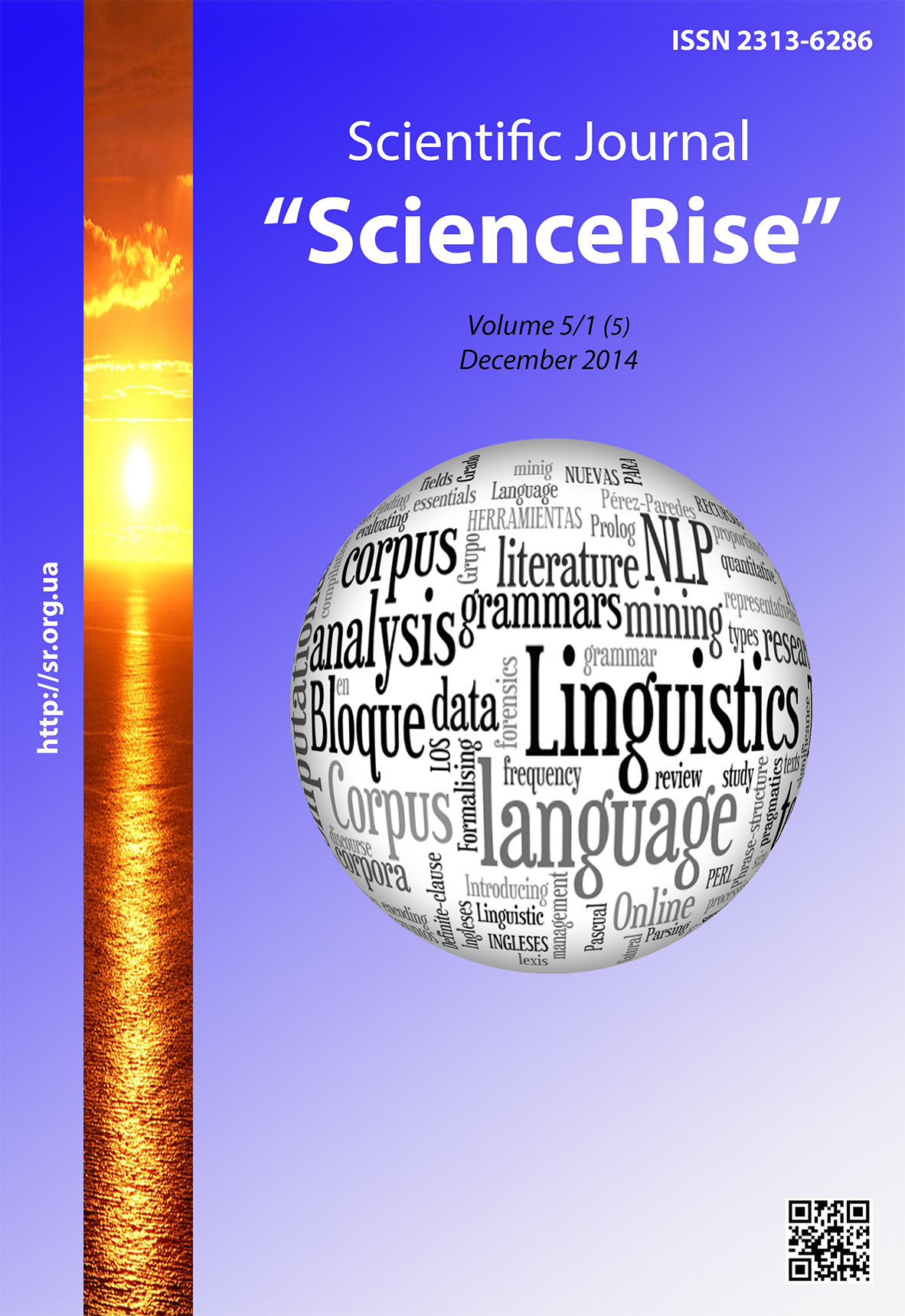Research of probiotic properties of Bacillus sp. 1.1. and B. amyloliquefaciens УКМ В-5113 stains
DOI:
https://doi.org/10.15587/2313-8416.2014.32023Keywords:
bacillus probiotics, bacillus antagonistic activity, feed probiotics, bacillus react to bile, antibioticsAbstract
It is conducted the research of probiotic properties discharged from the environment Bacillus sp. 1.1. and B. amyloliquefaciens UKM B-5113 strains. It is determined their morphological and physiological and biochemical characteristics, investigated and found high and average antagonistic activity against actual museum and opportunistic strains of microorganisms. It is shown a resistance to low and high pH values and different concentrations of bile acids.
References
Pirog, T. P. (2010). Zagalna microbiologiya [General Microbiology]. NUHT, 632.
Bucenko, L. M., Penchuk, Ju. M., Pirog, T. P. (2010). Tekhnologii mikrobnogo sintezy likarskih zasobiv [Technology of drugs microbial synthesis]. Kyiv, Ukraine: NUHT, 323.
Starovoytova, S. O., Skrocka, O. I., Penchuk, Ju. M., Pirog, T. P. (2012). Tekhnologiya pobiotikiv [Probiotics technology]. Kyiv, Ukraine: NUHT, 318.
Cutting, S. (2011). Bacillus probiotics. Food Microbiology, 28 (2), 214–220. doi: 10.1016/j.fm.2010.03.007
Sanders, M., Morelli, L., Tompkins, T. (2003). Sporoformers as human probiotics: Bacillus, Sporolactobacillus, and Brevibacillus. Comprehensive reviews in food science and food safety. 2 (3), 101–110. doi 10.1111/j.1541-4337.2003.tb00017.x
Khaneja, R., Perez-Fons, L., Fakhry, S., Baccigalupi, L., Steiger, S., To, E., Sandmann, G., Dong, T., Ricca, E., Fraser, P., Cutting, S. (2009). Carotenoids found in Bacillus. Journal of Applied Microbiology. 108 (6), 1889–1902. doi: 10.1111/j.1365-2672.2009.04590.x
Pohilenko, V. D., Pereligin, V. V. (2008). Probiotiki na osnove sporoobrazuyushih bakteriy i ih bezopasnost [Probiotics based on spore-forming bacteria and their safety]. Newspaper “news of Medicine and Pharmacy”, 18 (259).
Krieg, N. R. (Ed.) (1984). Bergey’s Manual of Systematic Bacteriology, Volume 1. Baltimore: The Williams & Wilkins Co., 964.
Downloads
Published
Issue
Section
License
Copyright (c) 2014 Владислав Олександрович Мілян, Максим Андрійович Хархота, Олексій Олександрович Нечипуренко

This work is licensed under a Creative Commons Attribution 4.0 International License.
Our journal abides by the Creative Commons CC BY copyright rights and permissions for open access journals.
Authors, who are published in this journal, agree to the following conditions:
1. The authors reserve the right to authorship of the work and pass the first publication right of this work to the journal under the terms of a Creative Commons CC BY, which allows others to freely distribute the published research with the obligatory reference to the authors of the original work and the first publication of the work in this journal.
2. The authors have the right to conclude separate supplement agreements that relate to non-exclusive work distribution in the form in which it has been published by the journal (for example, to upload the work to the online storage of the journal or publish it as part of a monograph), provided that the reference to the first publication of the work in this journal is included.

